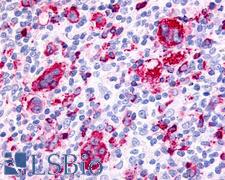Login
Registration enables users to use special features of this website, such as past
order histories, retained contact details for faster checkout, review submissions, and special promotions.
order histories, retained contact details for faster checkout, review submissions, and special promotions.
Forgot password?
Registration enables users to use special features of this website, such as past
order histories, retained contact details for faster checkout, review submissions, and special promotions.
order histories, retained contact details for faster checkout, review submissions, and special promotions.
Quick Order
Products
Antibodies
ELISA and Assay Kits
Research Areas
Infectious Disease
Resources
Purchasing
Reference Material
Contact Us
Location
Corporate Headquarters
Vector Laboratories, Inc.
6737 Mowry Ave
Newark, CA 94560
United States
Telephone Numbers
Customer Service: (800) 227-6666 / (650) 697-3600
Contact Us
Additional Contact Details
Login
Registration enables users to use special features of this website, such as past
order histories, retained contact details for faster checkout, review submissions, and special promotions.
order histories, retained contact details for faster checkout, review submissions, and special promotions.
Forgot password?
Registration enables users to use special features of this website, such as past
order histories, retained contact details for faster checkout, review submissions, and special promotions.
order histories, retained contact details for faster checkout, review submissions, and special promotions.
Quick Order
PathPlusTM F2RL3 / PAR4 Antibodies
F2RL3 (Proteinase-Activated Receptor 4, PAR4) is a member of the Proteinase-Activated Receptor subfamily and is activated by trypsin and thrombin. Binding by thrombin leads to the activation of platelets, leukocytes, endothelial cells and mesenchymal cells at sites of vascular injury. These cellular responses are triggered through proteolytic activation of the receptors by thrombin. It is believed that F2RL3 functions as a cofactor for the cleavage and activation of F2RL3. In clear cell renal cell carcinoma, high expression of F2RL3 is associated with poor prognosis and aggressive characteristics. In immunohistochemistry, F2RL3 has membranous positivity in Herring bodies of the posterior pituitary, Bergmann glia of the cerebellum and variable staining in neurons of the CA2 hippocampus, lateral hypothalamic nucleus and basal nucleus of Meynert in the brain. In peripheral tissues, it has moderate to strong positivity in hepatocytes, the bronchial respiratory epithelium, pancreatic exocrine cells, neuroendocrine cells of the small intestine, the placenta, the urinary bladder, sweat glands, the thymus, and also on neutrophils in some tissues including the anterior pituitary and spleen.
References: J Cancer. 2018; 9(18): 3400–3406, PMID: 30271502
2 PathPlusTM Antibodies


☰ Filters
Products
Antibodies
(2)
Type
Primary
(2)
Target
F2RL3 / PAR4
(2)
Reactivity
Human
(2)
Monkey
(1)
Application
IHC
(2)
IHC-P
(2)
Host
rabbit
(2)
Product Group
GPCR Database Antibodies
(2)
PathPlus Cancer
(2)
Clonality
polyclonal pc
(2)
Format
Unconjugated
(2)
Epitope
Cytoplasmic Domain
(1)
Extracellular Domain
(1)
Publications
No
(2)

Cancer
Fast Shipping
F2RL3 / PAR4 Rabbit anti-Human Polyclonal (Extracellular Domain) Antibody
Human, Monkey
IHC, IHC-P
Unconjugated
50 µg/$395

Cancer
Fast Shipping
F2RL3 / PAR4 Rabbit anti-Human Polyclonal (Cytoplasmic Domain) Antibody
Human
IHC, IHC-P
Unconjugated
50 µg/$460
Viewing 1-2
of 2
product results










